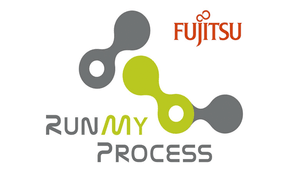PaaS
Alternatives to Paying Millions in Software Licenses

Telecom operators pay millions in software licenses each year. By doing so they are sustaining an industry of “feature loading”. “Feature loading” refers to complex software solutions that in order to win requests for proposals (RFP) add more and more features. Most telecom operators are using RFPs to compare different software solutions. Whoever has more features for the lowest price wins the deal. The end result is that telecom software is unnecessary complex and expensive. Software providers do not want to respond with “not compliant” and prefer to add some extra feature even if the one who wrote the RFP will never, ever use them.
The likes of Apple have shown us that software is most beautiful when it does very few things very well. The era of mini applications allows users to use special purpose “apps” for each activity. No training required. No heavy investment. No heavy integrations.
Telecom operators should move away from the long RFPs with hundreds of features being compared. Instead they should try to simplify. Why pay millions for a complex system that does too many things too complex? Many large dotcoms have moved away from this type of solutions and have used Open Source, have built single purpose systems/services or generic platforms with plugins to reduce complexity.
Examples:
- Amazon has pioneered Cloud Computing and has created individual single purpose systems or services that are easily accessible via REST or Web Interfaces. Different individual services (e.g. product recommendation, virtual server, virtual storage) get aggregated into complex solutions at the last moment.
- Google built its Google File System, BigTable, etc. as generic platforms on which hundreds of other services could be easily added.
- Thousands of dotcoms are using Hadoop, Cassandra, etc. to store data.
Each telecom service needs to be provisioned, rated, charged, billed, monitored, operated, supported, migrated, etc. By building solutions in which network, IT, communication and services are mixed into mega-complex architectures it has become impossible to launch new services in less than 12 months.
Building a Free Telco PaaS
How to do it differently? Is it possible to build a zero-license Telco PaaS that acts like a giant service delivery platform in the Cloud? YES.
Operators will need to use Open Source, IaaS and SaaS solutions. IaaS can be delivered cheaply by using Open Source components: KVM for virtualization, Open Nebula for virtual machine and storage management, Hadoop/Cassandra for storage, Open vSwitch for network virtualization, etc. On top PaaS platforms can be built with solutions like WSO2 Stratos. Telecom services like Twilio‘s or the private cloud version, RestComm, can be used to allow developers to quickly create VAS. Open Source billing systems have been announced, like Meveo. Online shops can be build with Opencart. Datawarehousing and data analytics with Pentaho or Jasper Reports. There are hundreds of open source monitoring solutions: Icinga, Nagios, Zenoss, etc. Helpdesk can either be SaaS like Zendesk, or Open Source like Request Tracker. CRM like SugarCRM. SIP backoffice systems like FreeSwitch.
Operators should start thinking about the Cloud as a way to simplify internal integrations. All back-office systems should be shielded from the outside via easy to use REST, Thrift/Protocol Buffers, etc. interfaces. Service-based loadbalancing should allow service upgrades and rolling migrations without outages. The architecture should be built with Salesforce.com in mind. Non-programmers, and even better end-users, can build their own VAS by using drag-and-drop interfaces and combining different service blocks together into custom solutions. Plug-ins allow for custom behaviour without cluttering a solution for the rest of the users.
Operators should embrace new disruptive technologies to simplify their business, lower their cost structures and be able to launch new services every hour of the day. Large dotcoms are launching new features every day and use A/B testing to validate if users like them and they add to the bottom line. Marketing and product management get a totally different dimension…
[This post originally appeared on Telruptive and is republished with permission.]






